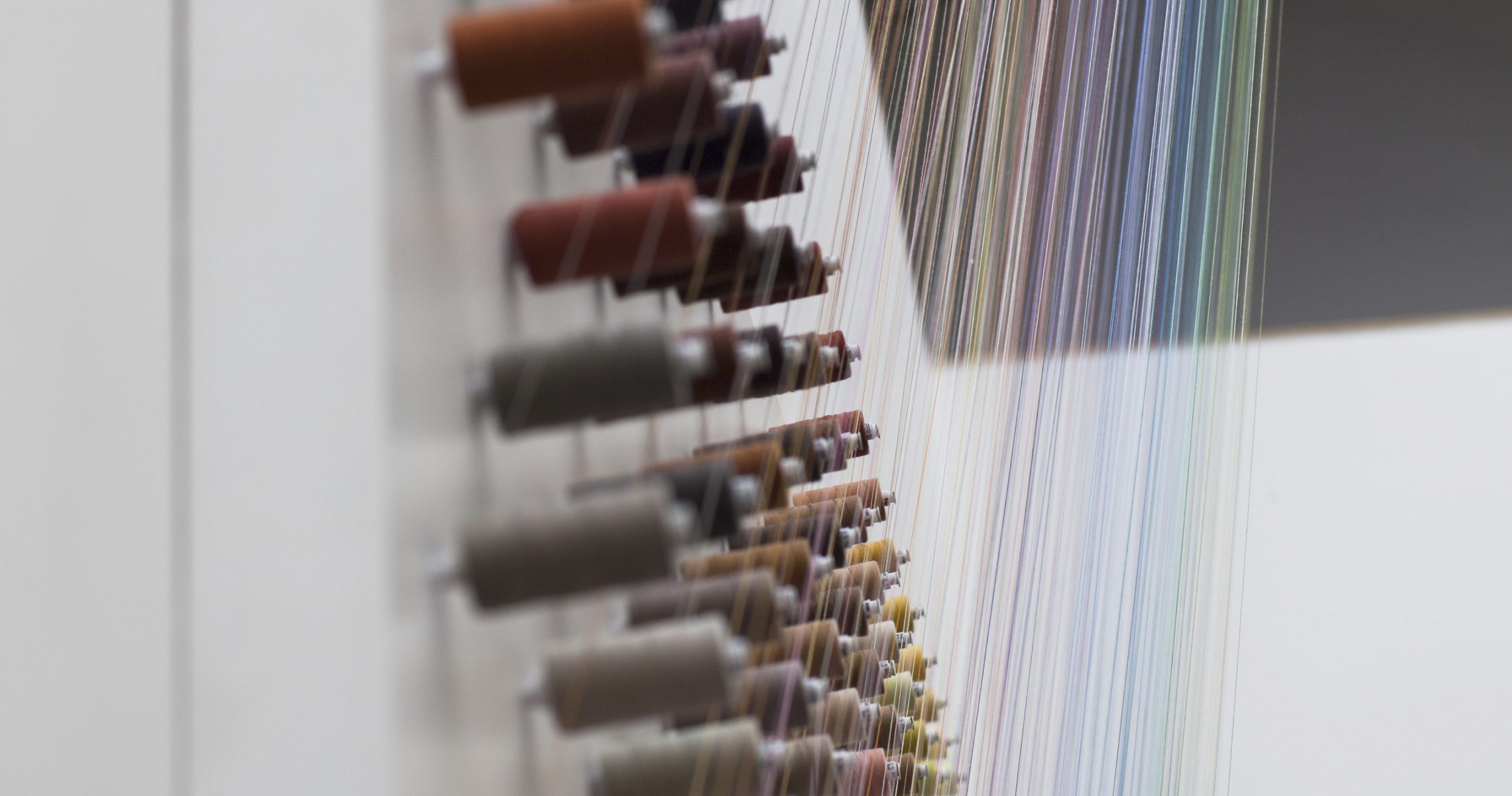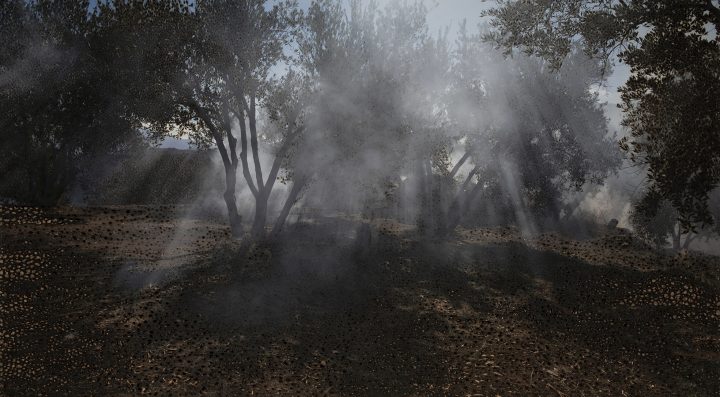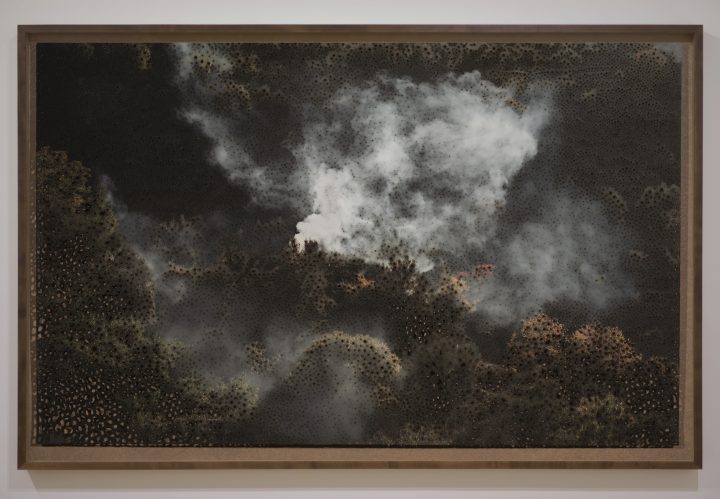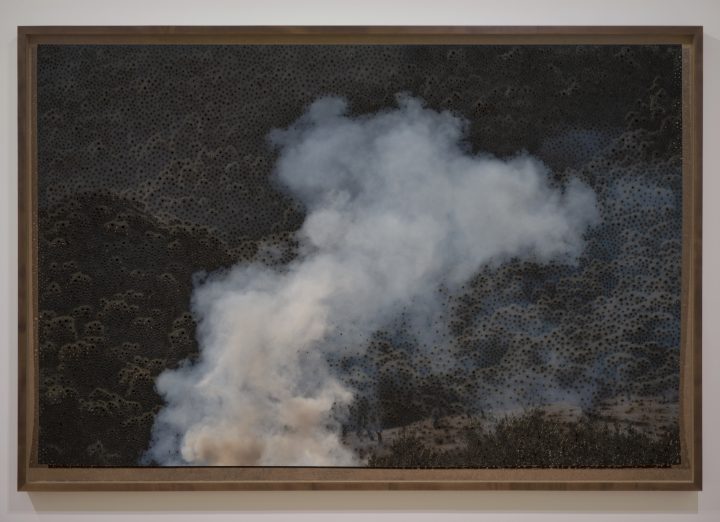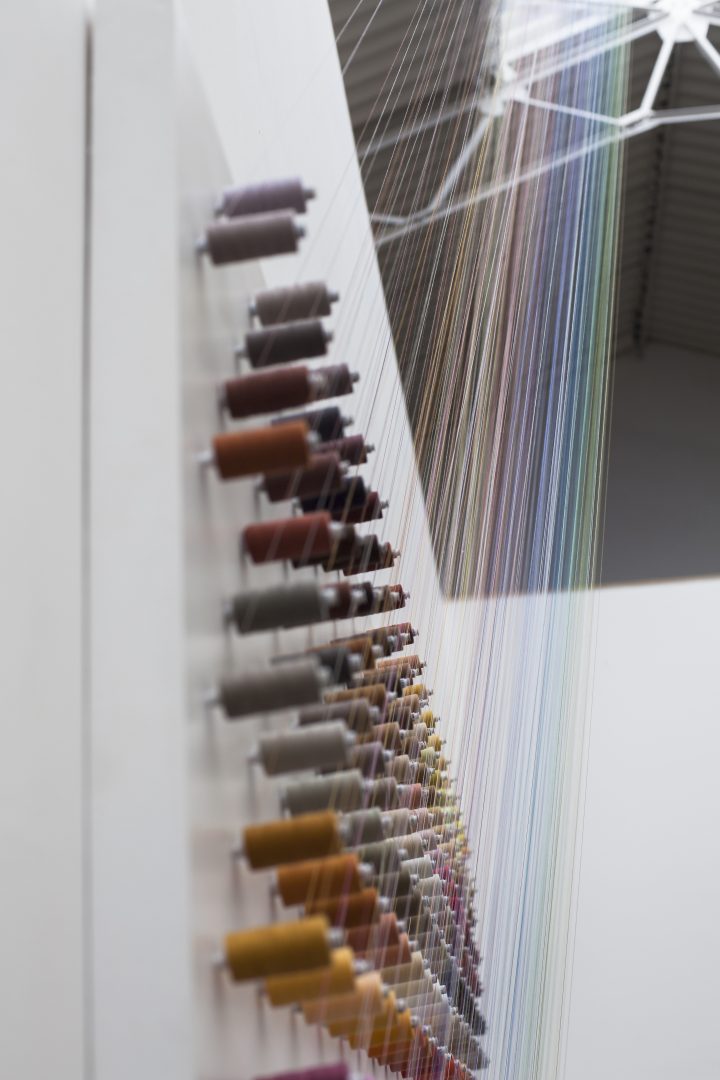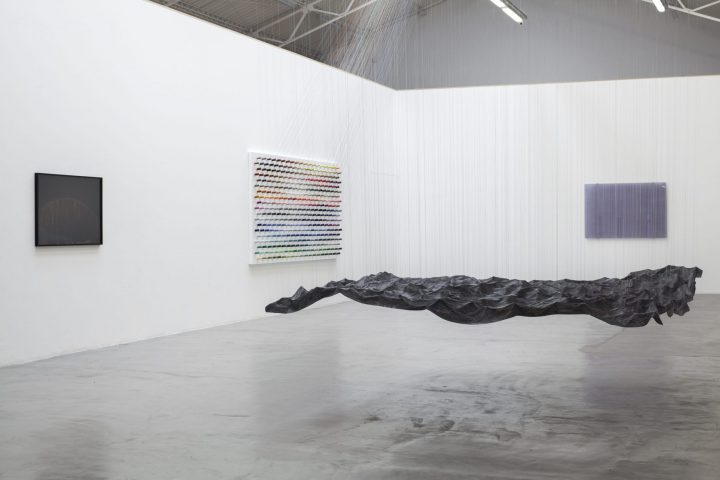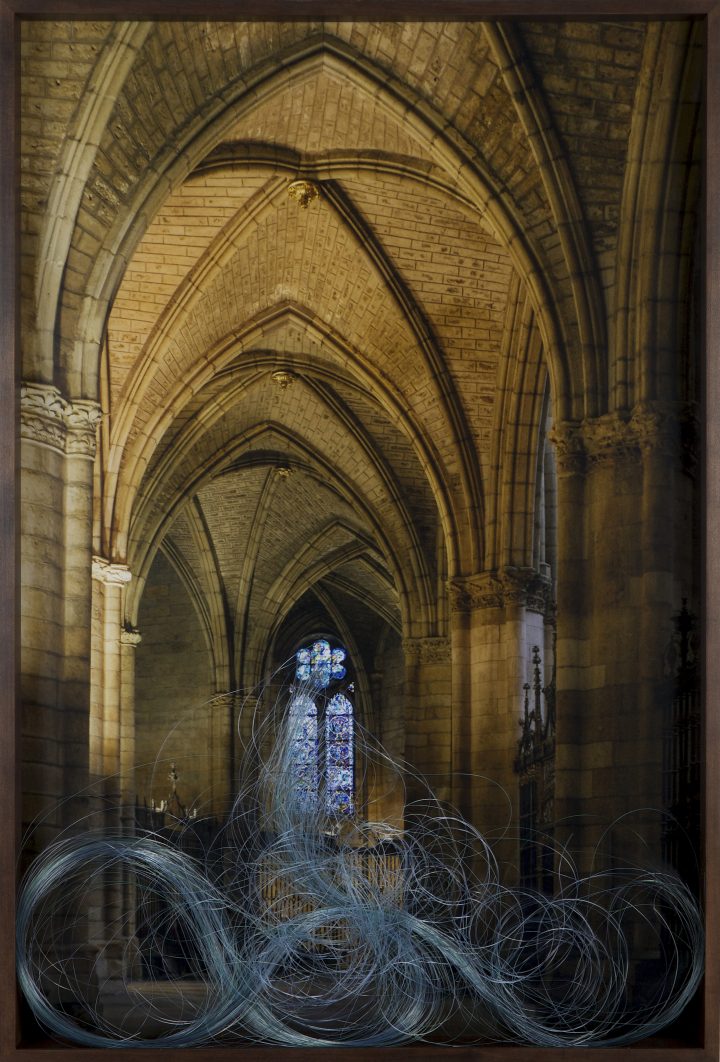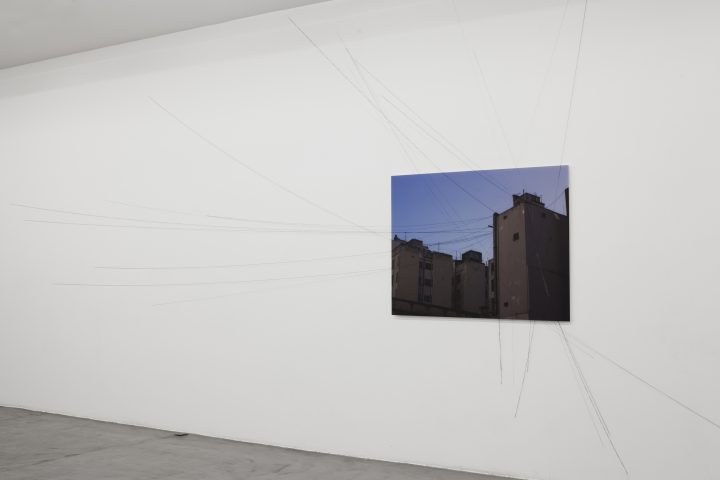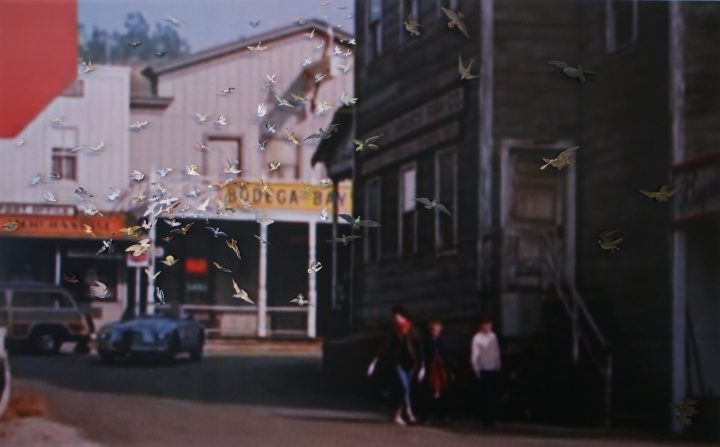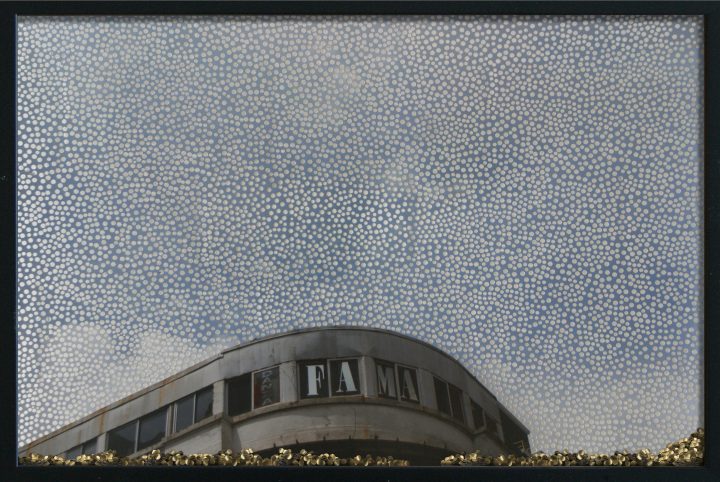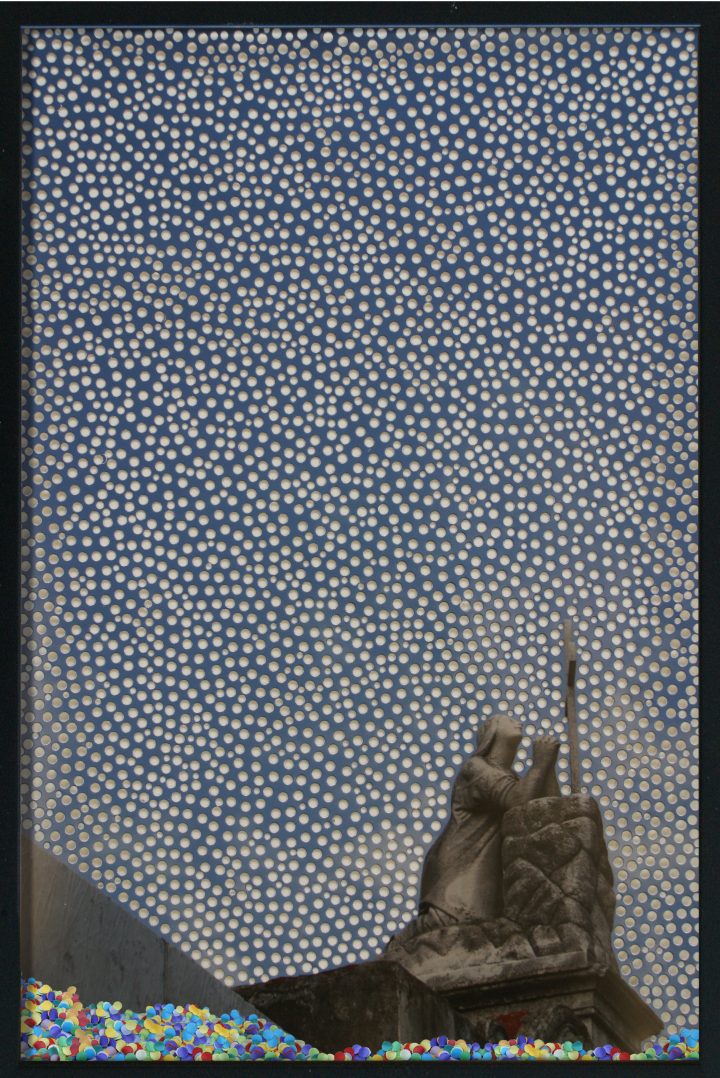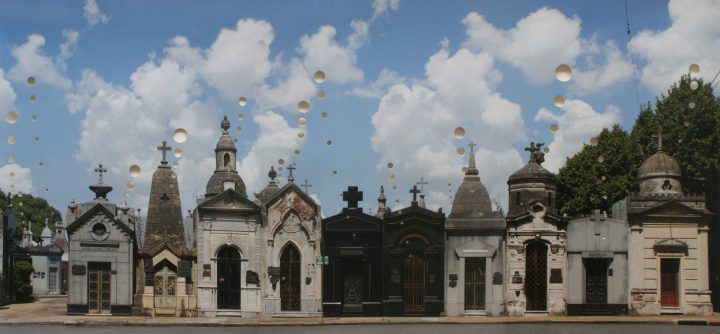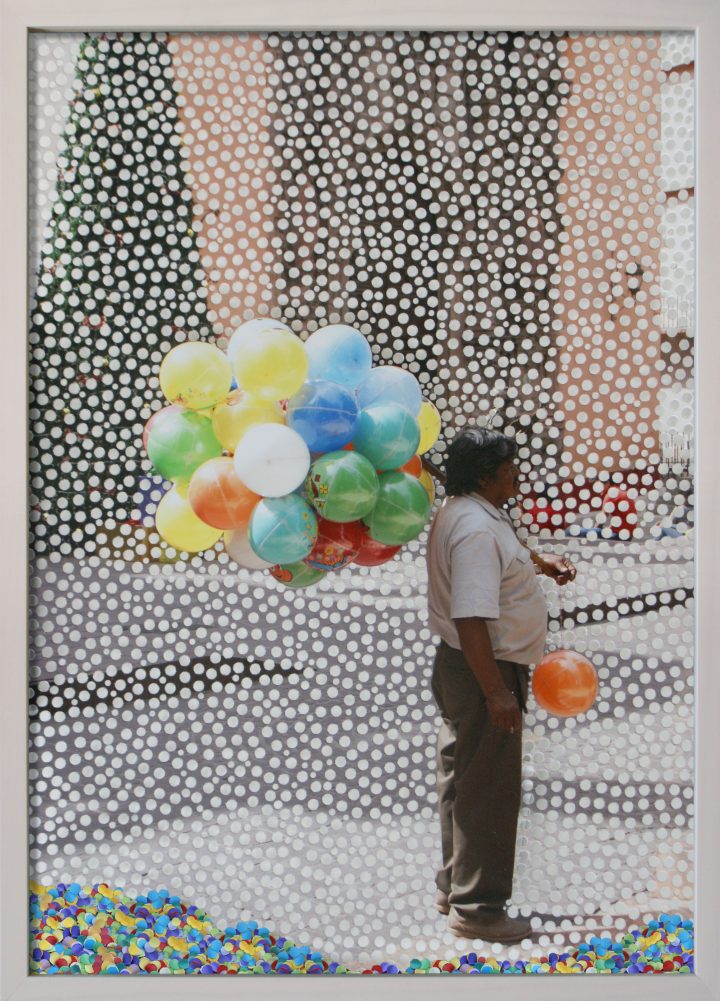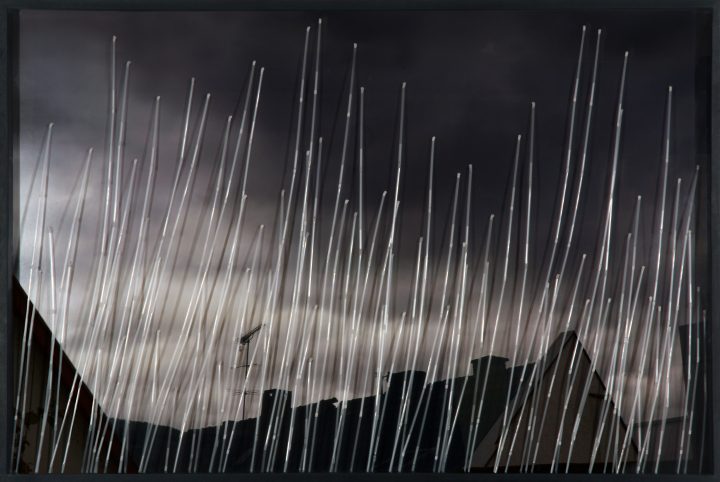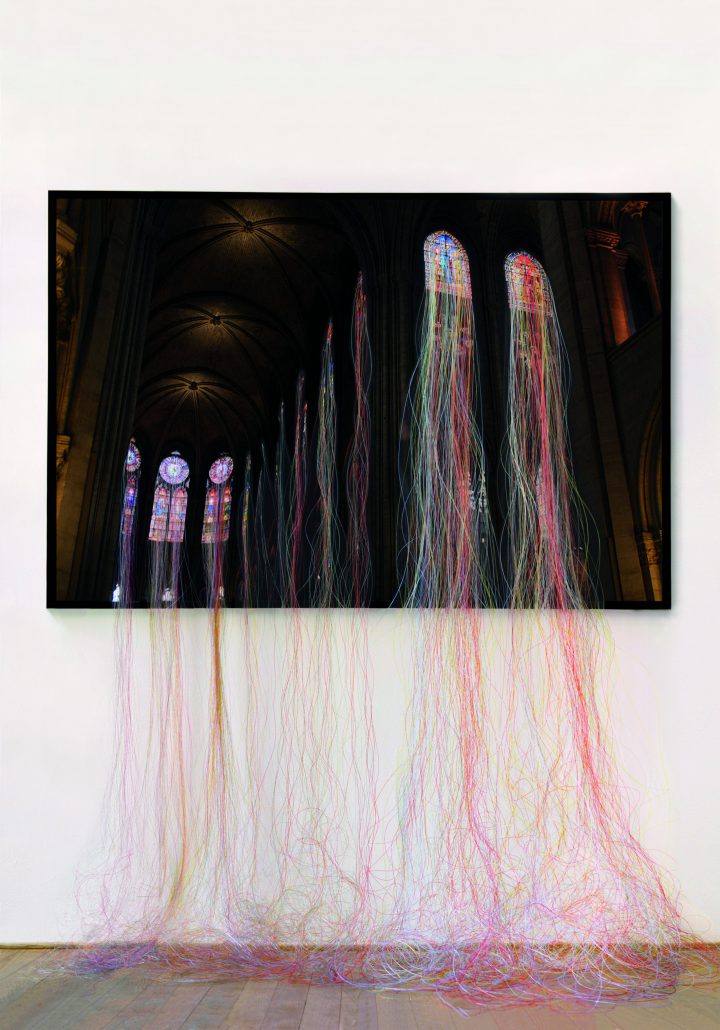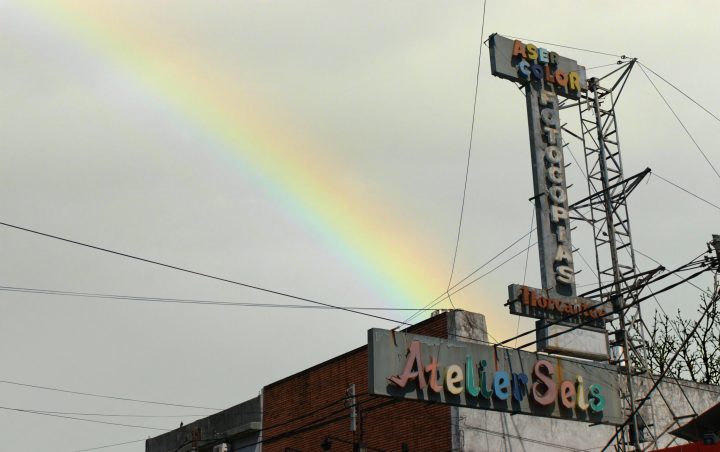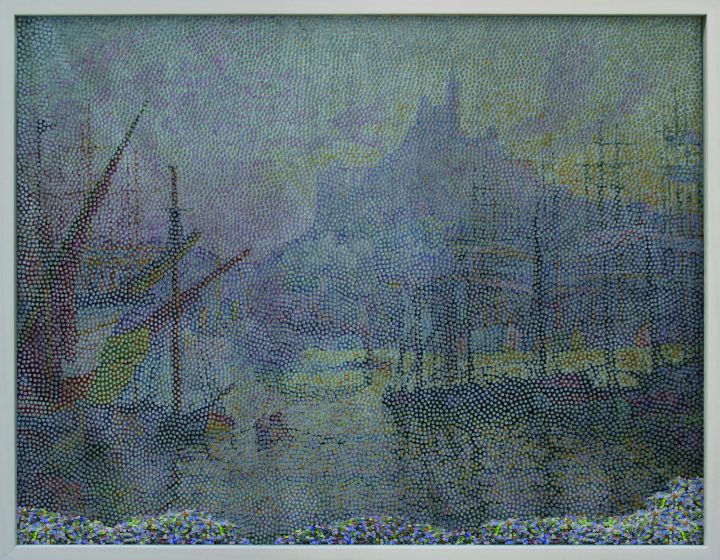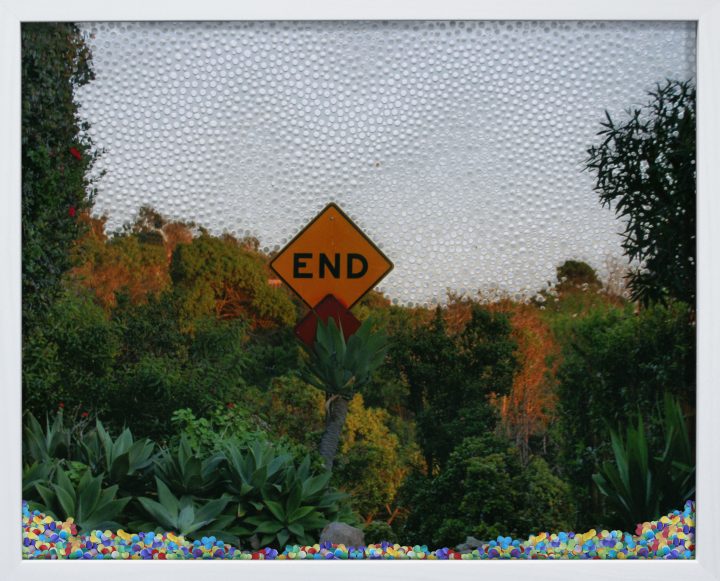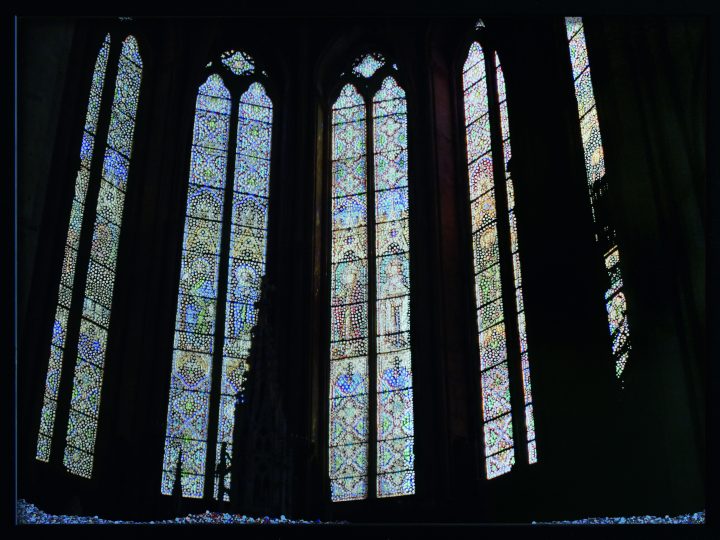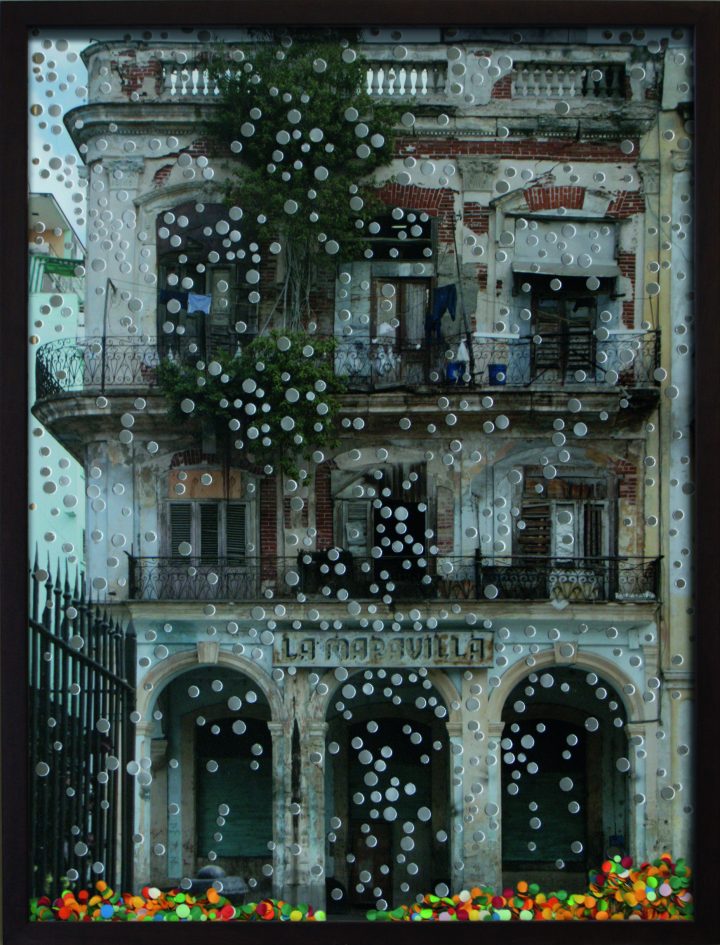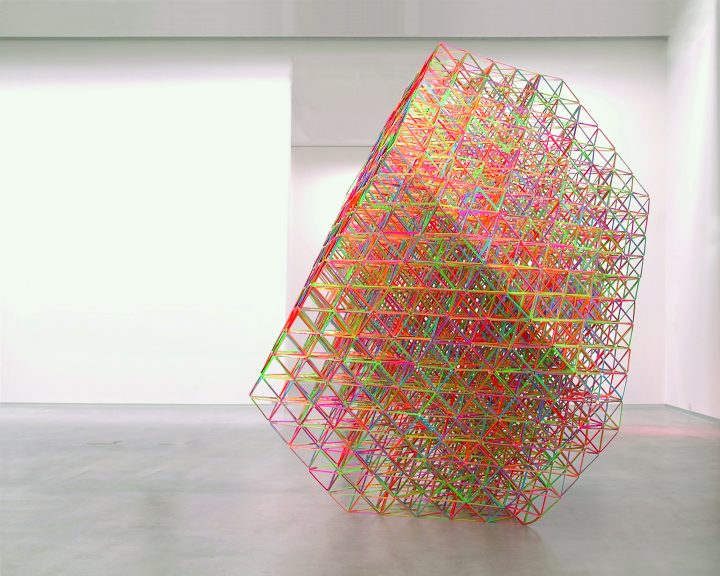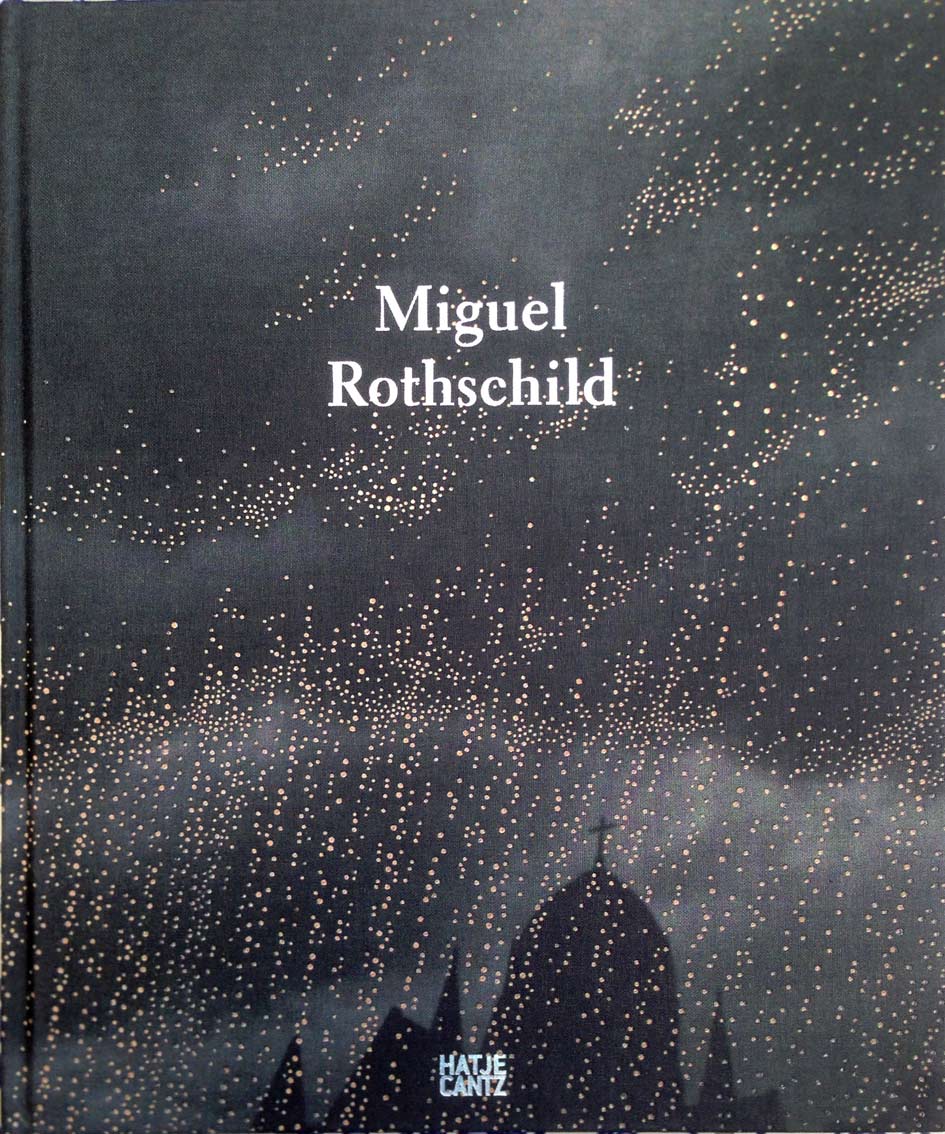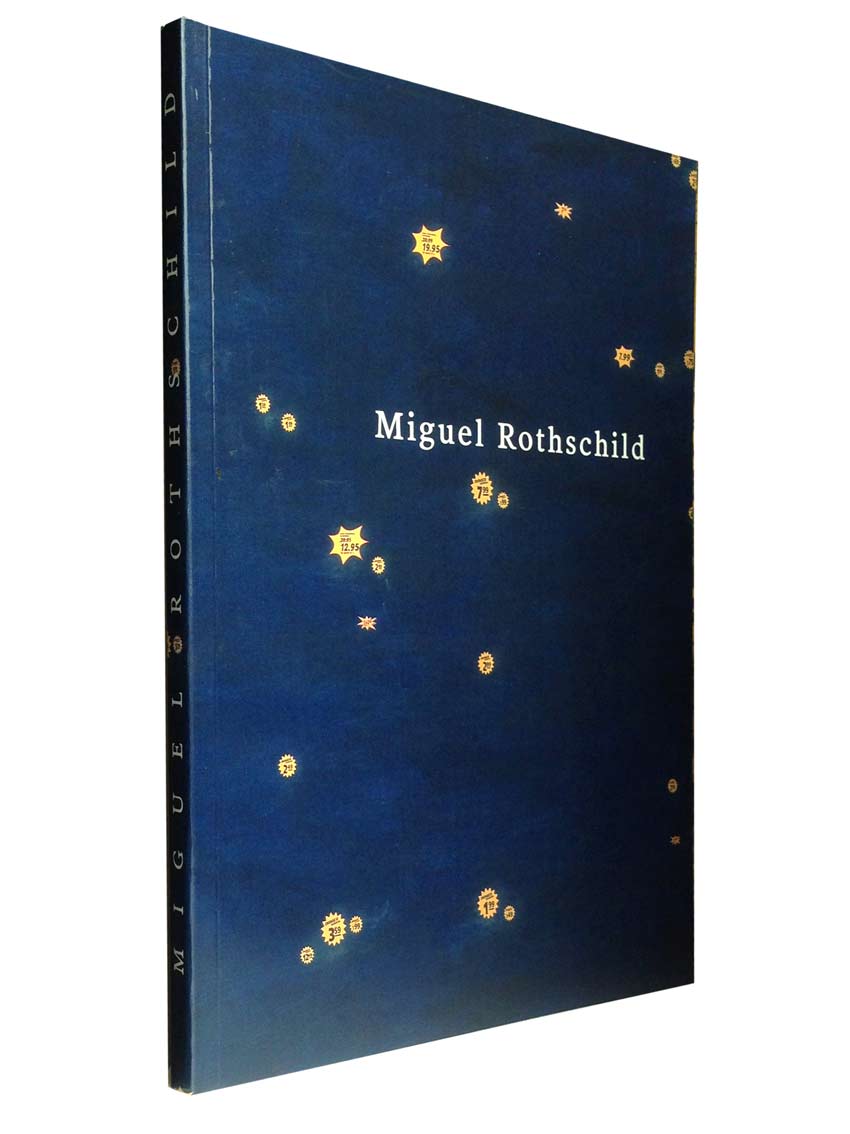Nací en Buenos Aires en 1963. Después de haber terminado la carrera de Bellas Artes presenté en el centro cultural Recoleta mi primera muestra individual. Fue en 1990 y se tituló »A todas las mujeres que me hicieron sufrir como un perro«. Luego me fui de Argentina para hacer un máster en la Universität der Künste de Berlín a cargo de Rebecca Horn. En esa ciudad resido desde hace 25 años.
Para la realización de mis obras recurro a materiales diversos y con frecuencia a la fotografía como soporte. Me gusta trabajar con objetos cotidianos y darles una connotación divina, así como también, convertir en profano lo sagrado. Suelo hacer referencias a la historia del arte, a la iconografía cristiana, a mitos y leyendas bíblicas para transmitir contenidos que luego revierto, moviéndome en un espacio en donde lo real pueda confundirse con lo fantástico y viceversa.
Exposiciones individuales
2019
Le Spectre, Maison de l`Amérique latine, Paris, Francia
Geist, Galerie Kuckei + Kuckei. Berlin, Alemania
2018
De Profundis, St. Matthäus Kirche. Berlín, Alemania.
Camera chiara, Evangelisches Zentrum. Berlín, Alemania.
2017
Elegie, Galerie Kuckei + Kuckei. Berlín, Alemania.
2016
Contre vent et marées, Bendana-Pinel art contemporain. Paris, Francia
Cuarenta dias y cuarenta noches, Ruth Benzacar Galería de Arte. Buenos Aires, Argentina
2014
Buenos Aires, Galerie Kuckei + Kuckei. Berlín, Alemania
2012
Happy Believers, Galerie Kuckei + Kuckei. Berlín, Alemania
Images de la Mélancolie, Bendana Pinel Art Contemporain. Paris, Francia
Felices los que creen sin haber visto, Ruth Benzacar Galería de Arte. Buenos Aires, Argentina
2010
Als der Himmel Sterne sah, Franke-von Oppen. Berlín, Alemania
2009
El Mesías Contraataca, Kunstverein Hannover. Hanóver, Alemania
El Mesías Contraataca, Langage Plus. Montreal, Canadá
2008
Con penas ni gloria, Ruth Benzacar Galería de Arte. Buenos Aires, Argentina
Le ciel qui a vu des etoiles, Galería Bendana Pinel. Paris, Francia
33 traurige Tragödien, Kunstraum Potsdam. Potsdam, Alemania
Miguel Rothschild plays Miguel Rothschild, two tragic movies, 5533. Istambul, Turquía
2006
New works and some special offers, Galerie Barnoud. Dijon, Francia
2005
Celestial, Ruth Benzacar Galería de Arte. Buenos Aires, Argentina
2004
Paradis, Musée de la Chartreuse. Douai, Francia
Himmlisch, Galerie Hengevoss-Dürkop. Hamburgo, Alemania
Centre Régional d´Art Contemporain. Montbéliard, Francia
2002
Mirta Demare, Ruimte voor actuele kunst. Rotterdam, Países Bajos
2001
Lagrimas asesinas, Ruth Benzacar Galería de Arte. Buenos Aires, Argentina
2000
Miguel Rothschild, Museo de Arte Moderno. Buenos Aires, Argentina
Killer Tränen, Galerie Hengevoss Dürkop. Hamburgo, Alemania Foto/Graphik Galerie Käthe Kollwitz. Berlín, Alemania
Lagrimas asesinas, Museumsakademie Galerie Helen Adkins. Berlín, Alemania
1998
The killing tear (junto con Jorge Macchi), Galerie Jorge Alyskewicz. Paris, Francia
If you leave me, would you let me go with you?, Galerie Sandmann+Haak. Hanóver, Alemania
Projecto Paraiso, Ideen shop/Wollantik. Berlín, Alemania
1997
Die Tränen, die sind vergebens (con Stephan Hüsch), Westwerk. Hamburgo, Alemania
Exposiciones colectivas
2022
The Dream of Ulysses, Villa Carmignac /Foundation Carmignac. Porquerolles island France Boundless Encounters. Zhejiang Art Museum, China.
2021- 2022
Reunión. Ruth Benzacar Galería de Arte, Buenos Aires, Argentina.
2019
Schloßmediale Werdenberg. Werdenberg, St Gallen, Suiza.
Der Funk Gottes, Diözesanmuseum Bamberg, Alemania.
Augmented Dreams, Projektraum des Kunstquartier Bethanien, Berlin, Alemania.
2018
Shine on me. Wir und die Sonne, Deutsche Hygiene-Museum, Dresden, Alemania.
Hogar Dulce Hogar (hábitos artísticos contemporáneos), Muntref Museo de Artes Visuales, Buenos Aires, Argentina.
The Art House, Collectors Room Andrea V. Goetz und Schwnenfliess, Hamburg, Alemania.
3654 Days after, Bendana Pinel- Art Contemporain, Paris, Francia.
Die Zahl als Chiffre in der Kunst, DZ Bank – Kunstsammlung, Frankfurt, Alemania.
Sea of Desire, Foundation Carmignac, Porquerolles, Francia.
Biennale de l’Image Tangible, Red Studio, Paris, Francia.
2017
BienalSur, Bienal Internacional de Arte Contemporaneo de América del Sur, Casa del Bicentenario, Buenos Aires, Argentina.
Naturaleza Refugio y recurso del hombre, CCK, Buenos Aires, Argentina.
Yves Klein. Retrospectiva, Fundación Proa, Buenos Aires, Argentina.
Évidences du réel. La photographie face à ses lacunes, Musée d’art de Pully, Suiza.
2016
Northbound / Southbound, Bendana-Pinel Art Contemporain. Paris, Francia
Passion – Fan Behavior and art, Museo Ludwig Budapest. Budapest, Hungría
Passion – Fan Behavior and art, Stadtgalerie Kiel. Kiel, Alemania
ARCO, one man show, stand galería Kuckei + Kuckei. Madrid, España
2015
Apokalypse, Rohkunstbau-Exhibition, Schloß Roskow, Alemania
Blue Moon. Licht als Atmosphere, Kunsthalle HGN. Duderstadt, Alemania
Passion – Fan Behavior and art, Künstlerhaus Bethanien. Berlín, Alemania
2014
Ecrin, LAC&S. Limoges, Francia
Bendana Pinel Art Contemporain c/o Galleri Charlotte Lund, Galleri Charlotte Lund. Estocolmo, Suecia
2013
Art & Entreprise, Collection Géotec. Quetigny, Francia
1825 days, Bendana-Pinel Art Contemporain. Paris, Francia
2012
Dot.System. From Pointillism to Pixelation, Wilhelm Hack Museum. Ludwigshafen, Alemania
Religion und Riten, DZ Bank Kunstsammlung. Fráncfort, Alemania
Palabras, imágenes y otros textos, Museo de Arte Moderno de Buenos Aires. Buenos Aires, Argentina
Examples to follow! Expeditions in aesthetics and sustainability, Premchand Roychand Gallery. Mumbai, India
Paris Photo, one man show, stand de Kuckei + Kuckei. Paris, Francia
2011
Heimat Kunde, Museo Judío de Berlín. Berlín, Alemania
Arte de los 90 en la colección del Museo de Arte Latinoamericano – Fundación Constantini. Buenos Aires, Argentina
Examples to follow! Expedition in aesthetics and sustainability, -Virginia Haus / Überseequartier / Hafencity, Hamburgo, Alemania -Schwankhalle, Bremen, Alemania -Bauhaus Dessau, Alemania -Kunstverein Pfaffenhofen, Kunstverein Ingolstadt y Städtische Galerie Neuburg a.d. Donau, Alemania -Westwendischer Kunstverein, Gartow, Alemania
Adquisiciones, donaciones y comodatos, Museo de Arte Latinoamericano – Fundación Constantini. Buenos Aires, Argentina
2010
Transatlantic Impulses, Akademie der Künste Hanseatenweg. Berlín, Alemania
Berlin Transfer, Berlinische Galerie, Museo de Arquitectura, Fotografía y Arte Moderno de la ciudad de Berlín. Berlín, Alemania
Realidad y Utopía, 200 años de arte argentino, Akademie der Künste Brandemburger Tor. Berlín, Alemania
Ich Wicht, Kunstraum Potsdam. Potsdam, Alemania
Aasan, Ekici, Rothschild. Projectos, Fraunhofer-Institut. Potsdam, Alemania
Examples to follow! Expedition in aesthetics and sustainability, Uferhallen. Berlín, Alemania
2009
Maquinas de mirar, Centro Andaluz de Arte Contemporáneo. Sevilla, España
Visual Tactics, Mücsarnok Kunsthalle. Budapest, Hungaría
365 days, Bendana-Pinel Art Contemporain. Paris, Francia
En découdre, Fondation Ecureuil. Toulouse, Francia
2008
Glück. Welches Glück, Museo Alemán de la Higiene. Dresden, Alemania
Blickmaschinen, Museo de arte contemporáneo. Siegen, Alemania
Unsterblich! Der Kult des Künstlers, Kulturforum, Museos estatales de Berlín. Berlín, Alemania
Manipulate, Roxy Event Platformu. Estambul, Turquía
Subtil Textil, Galería de las Galerias de Galeries Lafayette. Paris, Francia
2007
ABC der Bilder, Museo de Pérgamo. Berlín, Alemania
Body Media, Exposición internacional de arte interactivo, O Art Center. Shanghái, China
Neue Heimat – Berlin Contemporary, Berlinische Galerie, Museo de Arquitectura, Fotografía y Arte Moderno de la ciudad de Berlín, Alemania.
Reunião, Baginski galería. Lisboa, Portugál
Galerie Hengevoss-Dürkop. Hamburgo, Alemania
2006
Association ART-CADE – Galerie des Grands Bains Douches de la Plaine. Marseille, Francia
Arquivar Tormentas, Colecciones ARCO y CGAC, Centro Galego de Arte Contemporánea. Santiago de Compostela, España
The Flip Book Show, Fotomuseum de la Provincia de Amberes. Amberes, Bélgica
Anstoss Berlin, Kunst macht Welt, Haus am Waldsee. Berlín, Alemania
Happy Believers, 7. Bienal de Werkleitz. Halle, Alemania
Urban Appearances, Video Parcour en la Rosa-Luxemburg-Platz. Berlín, Alemania
Secret and Public, Contemporary Art Projects Anke Blashofer. Berlín, Alemania
2005
Conte-Rothschild, Karpio + Facchini Gallery. Miami, Estados Unidos
Daumenkino, Kunsthalle Düsseldorf. Düsseldorf, Alemania
Zur Kasse bitte, Ludwig Forum, Aquisgrán, Alemania
Reisen ins Paradies, Kunsthalle Erfurt. Erfurt, Alemania
Exposición del cincuenta aniversario del Salon dárt contemporain de Montrouge. Hauts de Seine, Francia
Künstler. Archiv, Akademie der Künste. Berlín, Alemania
Permanent zeitgenössisch, Haus am Waldsee. Berlín, Alemania
2004
Cinemas du futur, Lille- Ciudad Cultural Europea 2004, Euralille. Lille, Francia
SuperYo, Museo de Arte Latinoamericano de Buenos Aires. Buenos Aires, Argentina
Ouvrir couvrir, Christian Aubert – Moments artistiques. Paris, Francia
1. Festival International de flipbooks, Akademie Schloss Solitude. Stuttgart, Alemania
2003
Moriceau/Peters/Rothschild, EOF. Paris, Francia
witterung.stromaufwärts. Basilea, Suiza
2002
Berlin Files, DeChiara Gallery. Nueva York, Estados Unidos
Le cinéma du futur, festival Via. Maubeuge, Francia
Le cinéma du futur, festival Exit. Créteil, Francia
Últimas tendencias, Museo de Arte Moderno de Buenos Aires. Buenos Aires, Argentina
La fotografia contemporanea latinoAmericana da new york a santiago del cile, Galleria dell’ Istituto Italo-Latinoamericano. Roma, Italia
Reality Check, Triennale der Photographie Hamburg 2002, Alemania
Festival Rümlingen. Rümlingen, Suiza
Lausanne Underground Film Festival. Lucerna, Suiza
2001
Galeria Hengevoss & Jensen. Hamburgo, Alemania
Premio Banco Nación, Sala Cronopios, Centro Cultural Recoleta. Buenos Aires, Argentina
2000
Concurrents units, Kunstraum B-2. Leipzig, Alemania
Lost Paradise?, Schloss Nacke, Alemania
Paradise, Kloster Neuzelle, Alemania
Macchi, Rios, Rothschild, Galería Mario Flecha. Girona, España
Continental Shift, Ludwig Forum para Arte Internacional. Aquisgran, Alemania
Search for art, Bovisa. Milan, Italia
1999
Gehag Forum. Berlín, Alemania
Museumsakademie, Galerie Helen Adkins. Berlín, Alemania
Sight seeing, Schloss Plüschow, Alemania
Still in motion, Lipanjepuntin Arte Contemporanea. Trieste, Italia
borges.es, Casa de América. Madrid, España
Fotografías de la colección del Museo de Arte Moderno de Buenos Aires. Buenos Aires, Argentina
1998
Artenergie, Palazzo Corsioni. Florencia, Italia
Resonancias simbólicas, Trayecto Galeria. Vitoria, España
1997
Exposición de los becarios del Karl- Hofer- Gesellschaft, Kunstamt Kreuzberg/ Bethanien. Berlín, Alemania
Die Süße des Fremden, Kunsthalle Dresden. Dresden, Alemania
art club berlin, art forum Berlin. Berlín, Alemania
Premios
2005
Segundo Premio, Monumento a Rosa Luxemburgo, otorgado por el Senado de Cultura de la ciudad de Berlín
2000
Premio Karl Hofer, Alemania
1996
Premio del Karl- Hofer- Gesellschaft (Atelierpreis1996), Berlín
1989
Segundo premio Fundación F. Lanus del Fondo Nacional de las Artes, Argentina
Colecciones
Fundación del Patrimonio cultural prusiano
BG, Berlinische Galerie, Museo de Arquitectura, Fotografía y Arte Moderno de la ciudad de Berlín
CGAC Centro Galego de Arte Contemporánea, España
Jüdisches Museum Berlín
Colección de fotografías del DZ Bank, Alemania
Malba, Museo de Arte Latinoamericano de Buenos Aires
Mamba, Museo de Arte Moderno de Buenos Aires
Colección del Ministerio de Transportes, la Construcción y la Vivienda, Alemania


